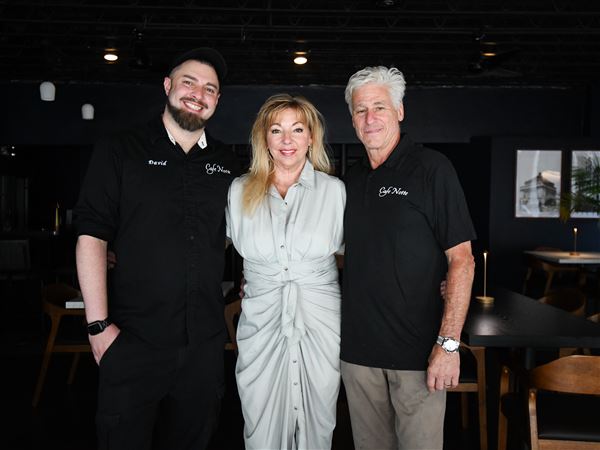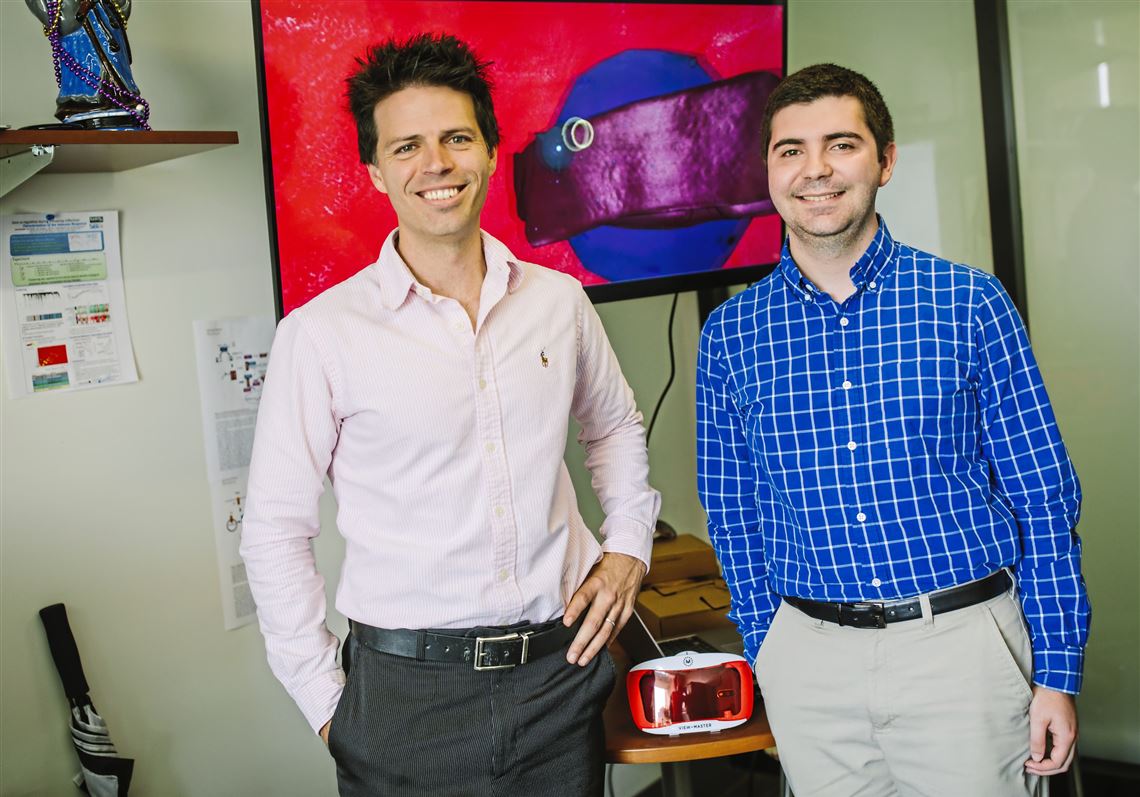It’s an arduous task to understand how the herpes virus spreads throughout the body. That’s true whether you’re a 10-year-old student or an engineer with a degree or two.
“You don’t ever get to visualize and actually see how the molecules interact in the cells,” said Jason Shoemaker, an assistant professor in chemical engineering at the University of Pittsburgh. “It’s hard to visualize, even for engineers … we design systems and sometimes have a hard time picturing how things exist in a biological system.”
In February, Mr. Shoemaker and the students in his research group called the Shoemaker Immonsystems Lab, began a nearly six-month journey to make these biological mechanisms easier to understand through gamification.
Over the summer, Mr. Shoemaker, his graduate research assistant Robert Gregg and 17 other students introduced a virtual reality game called “Vir-ed” to the Google Play store.
An infectious game
Vir-ed (pronounced like “wired”) is an edtech game developed with two story modes and a slew of mini-games meant to teach how a virus hijacks a cell.
The game was developed using the Unity platform, which was specifically created to make high quality 3D games.
In the first story mode, players float through the bloodstream and watch how a virus invades a cell to hijack it, creating viral proteins that will eventually become more viruses. All the while, text appears on the screen in the 3D space as a voiceover explains what is occurring.
Things flip around in the second story mode, when the player moves to the cell’s perspective to see its available defense mechanisms.
“During the story, you’re playing all these types of mini games that sort of teach you about different aspects of virology,” Mr. Gregg said.
“For example, there’s one game that’s teaching you about transcription of your DNA. It tells you about the four different nucleotides — A,T,C and G — and you’re essentially playing a Simon sort of game where you’re trying to match them up to the sequence you’re given to make a viral protein or a protein that’s trying to stop the virus.”
Once the story modes have been completed, all the mini games are unlocked and players can try to earn trophies through various achievements based on speed, the time it takes to finish a round or how many points are scored.
Each trophy appears as a 3D figurine based on a different part of the cell or a type of virus. Participants can go into the virtual trophy room and see which ones they’re missing, as well as read short blurbs about each trophy’s mechanisms and how it works.
“They did make this kind of like the old school Mario [Kart] games where after you beat one of these levels, you can come back and play them at any time.”
Mr. Shoemaker and Mr. Gregg created the game for all ages, though 10 and up is probably most desirable. “Less than 10 and it might be hard to keep their attention that long,” Mr. Shoemaker said with a laugh.
The path to the app
Mr. Shoemaker said the almost entirely student-led project became an exercise in project management for Mr. Gregg.
A Ph.D. candidate in chemical engineering at Pitt, he works at the intersection of his own course of study and virology, the study of viruses. While he was tasked with keeping the scientific integrity of the game intact, he isn’t a coder.
That was delegated to out-of-state students who he mostly communicated with through video calls or Slack, a cloud-based collaboration tool that works like a kind of instant message or group chat.
To create a 360-degree virtual reality app, Mr. Gregg and Mr. Shoemaker leveraged help from students at Full Sail University in Winter Park, Fla. The university’s aim is to provide training for work in entertainment, media, arts and technology.
“I was making sure what they did was both fun from a gaming perspective but also somewhat biologically relevant,” Mr. Gregg said with a laugh, recalling a time he had to take leadership of the team’s progress.
“There were some situations where they were like, ‘Can we have this huge virus and shoot it with proteins?’ and I’m like, ‘That’s not really how it works,’” he said.
Besides collaboration, debugging the game presented learning curves for the two engineers.
The game took three months of total development, but the debugging process took another two months, Mr. Shoemaker said, noting here are certain parameters an app must meet to be included in the Google Play market or Apple’s App Store.
Vir-ed still is not available in the App Store, but it should be in the coming weeks, Mr. Shoemaker said. The team is slightly behind on that iteration of the app.
“When you develop an application for the Apple store, it has to be developed on a Mac,” Mr. Shoemaker said. His team initially used PCs and more or less had to do all the work twice.
Improve to sell
Vir-ed is free. Despite all of the hard work, Mr. Shoemaker said it’s highly unlikely this app, or any future ones his lab develops, will be monetized. That’s because of his affiliation with Pitt.
The game uses a free software license called the MIT license, which means anyone has the right to use, copy, modify, merge, publish, distribute, sublicense or sell copies of the software. Under the license, Shoemaker Immunosystems Lab still technically owns the intellectual property for Vir-ed, but any developer can build on top of it.
“If you can find a way to expand the product and make it marketable, you are allowed to sell it as well,” Mr. Shoemaker said. “You’d have to recognize the original team, though.”
Mr. Shoemaker said he didn’t exactly receive any grants for the project, but he did receive an internal “grant” from the chemical engineering department.
He added that his lab has a few grant applications out with National Science Foundation to continue promoting these types of games in education. If funded, it would encourage him to continue creating games for free distribution.
The next game will begin development in January, and Mr. Shoemaker suspects he will have a different graduate student help this time.
“I want to give each of them the opportunity to try this as an exercise in management, because that’s something you don’t generally get in graduate school, which is really unfortunate,” Mr. Shoemaker said.
“That’s disappointing because if you get a Ph.D., a lot of times you end up managing,” he continued. “There’s learning on all sides of the problem.”
Courtney Linder: clinder@post-gazette.com or 412-263-1707. Twitter: @LinderPG.
First Published: October 4, 2017, 10:45 a.m.
















